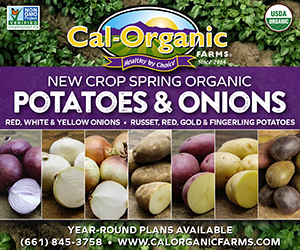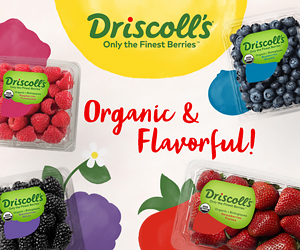The Washington organic apple crop is expected to increase by 30 percent for the 2018/19 crop year, following a 20 percent increase last season. While the increases may appear large --- and cause for a market price drop for organic apples --- a thorough analysis indicates that organic apple growers appear to be on the right track for the future of this sector of organic fruit
David Granatstein, a professor and researcher for the Center for Sustaining Agriculture and Natural Resources at Washington State University, has been tracking, analyzing and writing about northwest organic fruit production for many years. In fact, he publishes a document each year analyzing certified organic fruit trends, and makes presentations to growers about the opportunities in the organic fruit sector. He recently spoke with OPN, and far from ringing an alarm bell about the rapid growth in organic production, he noted that, at least for apple growers, organic production offers another viable alternative.
 David Granatstein, a professor and researcher at Washington State University
David Granatstein, a professor and researcher at Washington State University
“Right now it is clear that there are too many apples in the world market,” said Granatstein
Consequently, growers are looking at options to be profitable. One such avenue is the switching to specialty apple varieties. While the Red Delicious variety continues to be near the top on the varietal volume chart, it’s per acre return is much lower than many of the newer varieties because of both lower yields and a supply that outpaces demand. Many new varieties have joined the parade over the last 10 years and these varieties are better yielders, have greater consumer demand and are more profitable. That trend continues but it requires major investment (as much as $50,000 per acre) and a crystal ball to pick which varieties are going to be the winners in the long run.
Granatstein argues that transitioning to organic production is another choice growers can make, and it appears that choice is less risky. He said organic apples are regularly returning a premium in the marketplace and demand continues to grow.
His detailed analysis of demand and supply curves for organic apples shows continued promise. His last report, published in March of 2018, showed the growth in the sales of organic food has rebounded since the recession and has averaged 10-12 percent per year since 2011, with organic fruits and vegetables outperforming the total organic food category. And with Costco advocating for increased sales of organic produce, future growth appears inevitable, with a premium of up to 25 percent sustainable.
Washington apples during harvest season!
The WSU researcher has tracked organic apple acreage in Washington since the early 1990s, when the Alar scare first gave the sector a lift. Since then, he said the expansion of organic apple acreage and production has proceeded in a stepwise fashion. Typically, three to five years of organic expansion are followed by a like number of years of slow growth. This pattern has allowed demand to keep up with production growth, and for the organic market price to continue to climb over time.
An analysis of acres in transition shows that Washington is toward the end of a growth cycle that will most likely be followed by several years of slow growth. So while the rapid growth of the past two years might result in some market price declines at certain times during this season, the future still looks bright for organic producers. When this cycle of supply expansion is expected to end by 2020, organic sales growth should continue to expand creating a better marketing situation once again as the 2020s dawn.
Like any good researcher, Granatstein populated his discussion with OPN with a number of caveats. While the acreage reported to be in transition points to slow growth for the next three years, Washington apple growers are not required to report when acreage is in transition. Hence, the actual number of organic acres that come in production each year is greater than those transition reports would indicate. However, the outlook remains readable as reported transition acreage has been trending downward for the past three seasons.
Fuji apple varietals in the pacific north-west.
And Granatstein says it is possible that the growth of the organic food sector has been kept artificially low because of unmet demand. Increasing supplies could very well lead to lower prices for organic apples, which may unlock demand. Granatstein said price is considered the biggest barrier to increased sales in the organic sector, so it is logical to predict that lower prices will increase demand.
The apple expert has one more gauge on the popularity of organic apples, at least from the supply side. When he started giving his annual organic seminar to growers 15 years ago, the crowd was sparse. Now it is not uncommon to have several hundred growers in the room.






